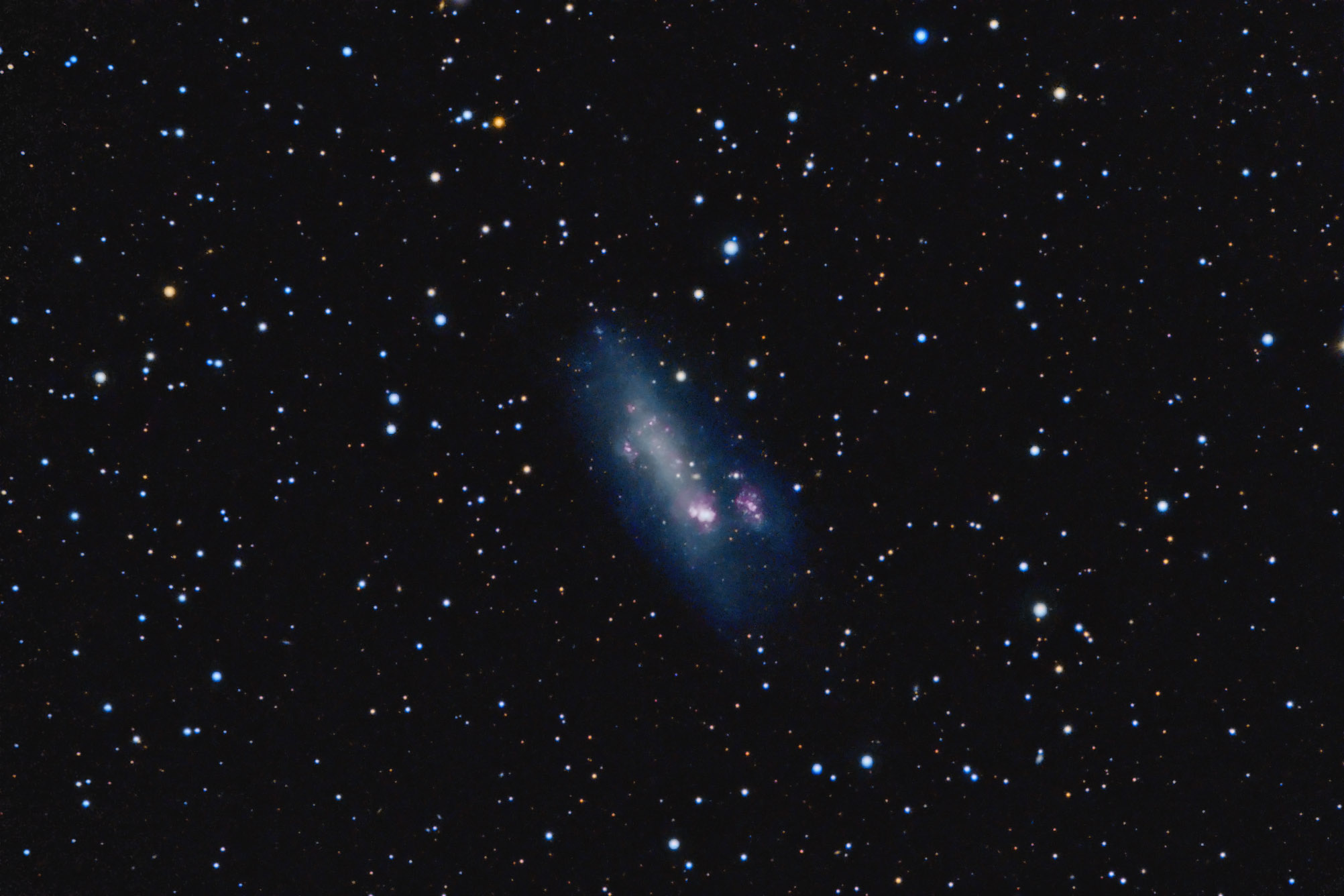| Description | Images |
Object name: NGC2366Designation(s): NGC2366, NGC 2366 is a dwarf galaxy in the M81 group. While it is a strange galaxy it isn't strange enough to make Arp's list. It is located in the constellation of Camelopardalis. That might sound like it is a camel but it is a giraffe and a rather faint one at that. This is a pair of galaxies. The tiny one is NGC 2363. Both are about 10 million light-years away so in our backyard. Massive star formation is going on in both galaxies. Two huge star clusters have formed in the star-forming region of NGC 2366. In fact, this is the original NGC 2366 as William Herschel described it when he found it on December 3, 1788. Though he did mention the rest of the galaxy all he meant as his find was this region. Only later did the name come to be applied to the entire galaxy. Their blue light completely overwhelmed my filters so the red color of the ionized hydrogen is pretty well lost though small regions in other areas of the galaxy are very obvious. I had better luck with the companion where the star cluster didn't saturate my system. Note the HII region ends with a shock wave at the northeast (upper left) end of the pink nebula. This likely is created by the light pressure of the super hot blue stars in the cluster. Whether this is really a separate galaxy or just part of NGC 2366 seems unknown as yet. Many years ago Hubble took a great shot of the star-forming regions that are so blown out in my image. Learn more about this at: Related Designation(s):11HUGS 119, CGCG 0723.6+6918, CGCG 330-038, DDO 042, IRAS 07233+6917, IRAS F07234+6917, KPG 133, MCG +12-07-040, NGC 2366, NGC2366, PGC 021102, UGC 03851, UZC J072853.7+691254, [SPB93] 082, |
